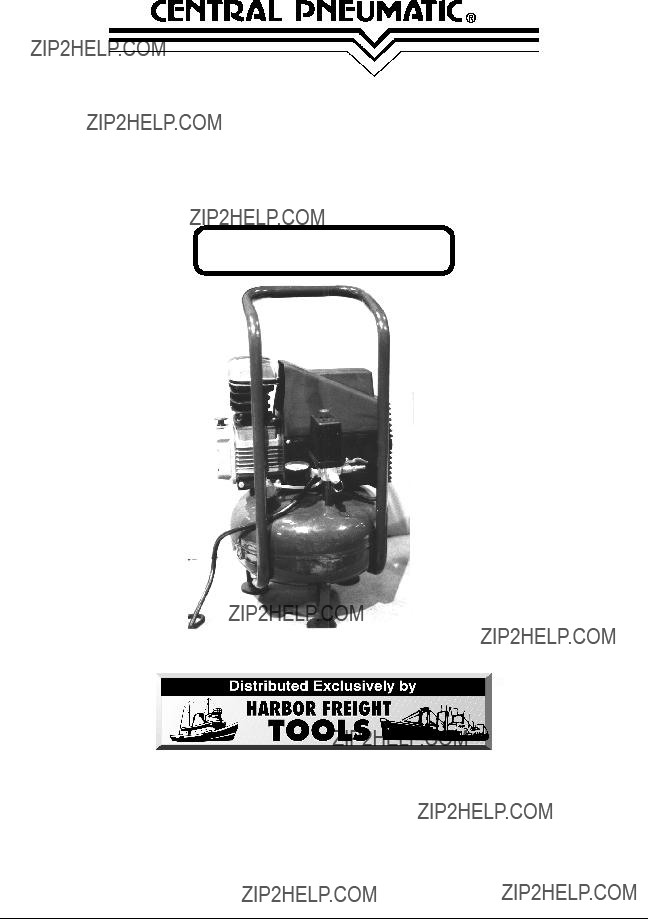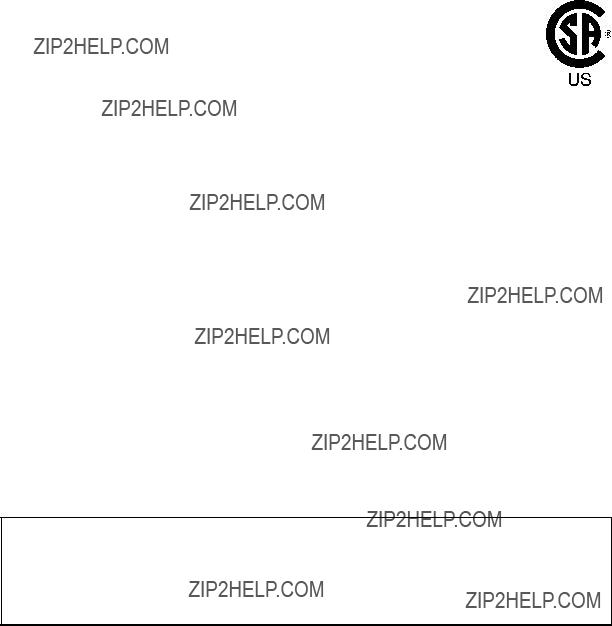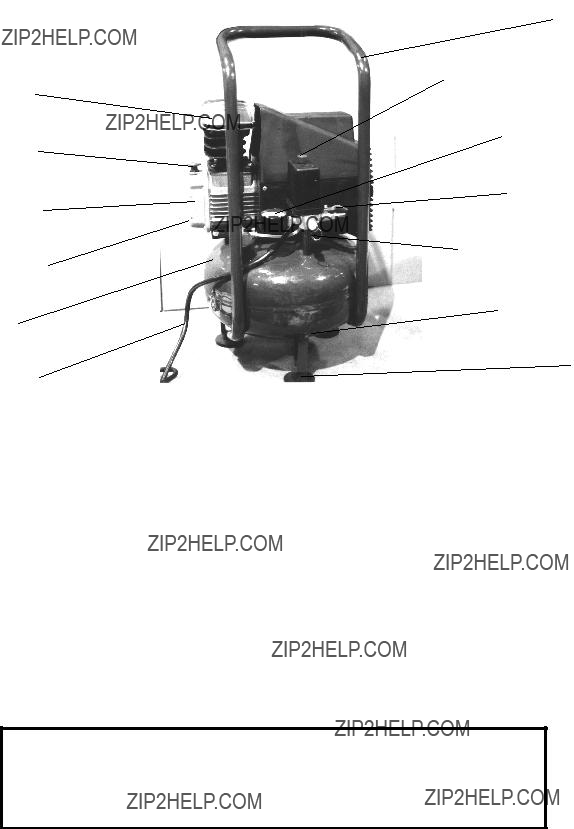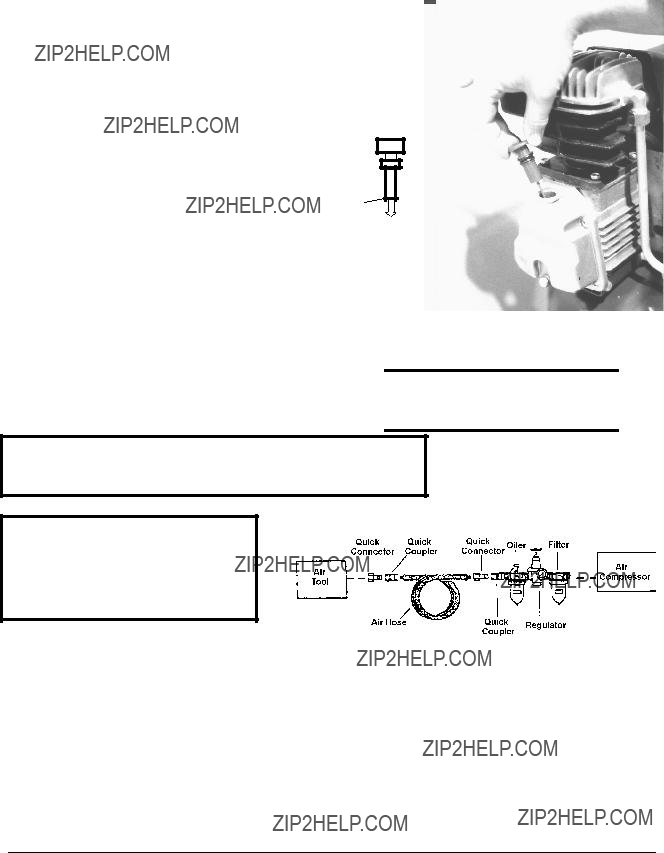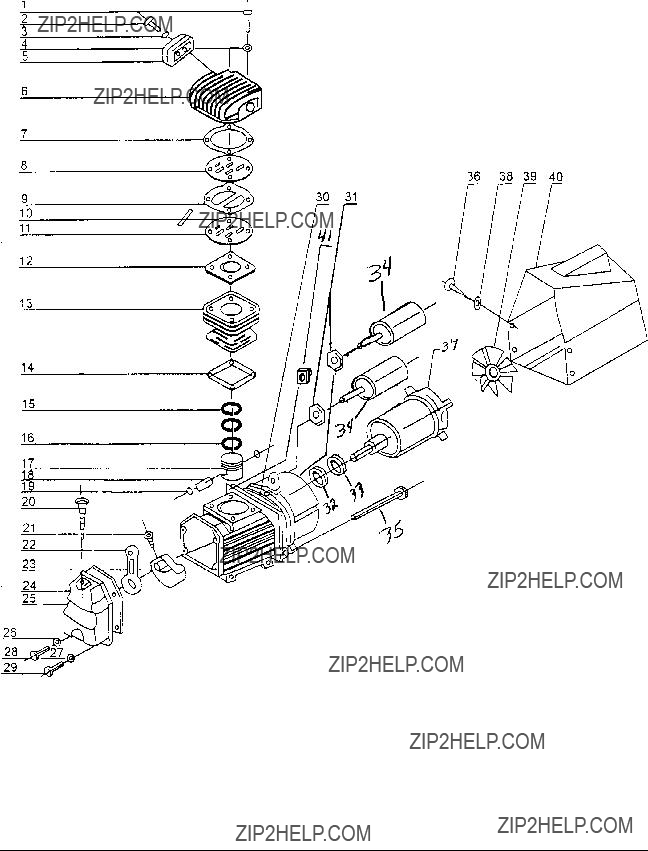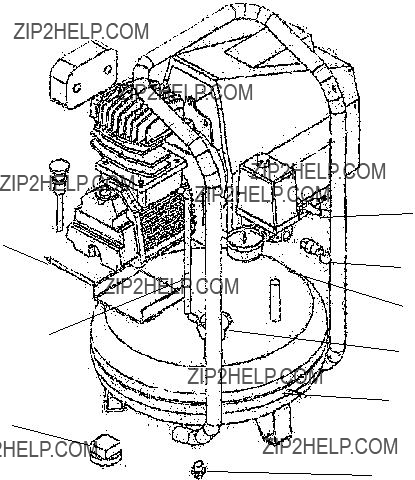OPERATION
1.Before each use, perform the following checks:
the OFF position, the red handle is across (per- pendicular to) the line of the air hose fitting.
In the ON position, the red handle is parallel with the line of the air hose fitting.
3.Turn ON the compressor, by pulling the Red ON/ OFF Switch up. Turn OFF the compressor by pushing the ON /OFF switch down.
4.Allow the compressor to build up at least 80 PSI
5.While the compressor is building up pressure, attach the hoses, fittings, and air tools you will use.
6.When the pressure has reached 80 PSI; open the air flow valve to allow the hoses and tools to become pressurized. Check for any significant air leaks, and check the operation of your tool.
7.As long as the power switch is pulled ON, the operation of the compressor is automatic, con- trolled by an internal pressure switch. The compressor will turn on automatically when the pressure drops to 80 PSI, and will turn off when the pressure reaches 115 PSI. Warning: This pressure switch is adjustable but changes to the pressure levels are not recommended; any change to the automatic ON/OFF pressure levels will cause additional stress on the motor which may result in shortened motor life.
NOTE: If it is necessary to quickly depressurize the air compressor,
First: Turn it off by pushing the ON / OFF switch down.
Then: Pull out on the ring on the pressure release valve to quickly release stored pressure.
Note: Compressor has a Thermal Overload Switch (#41). If Compressor shuts down from over- heating or related problems, turn Compressor OFF and allow it to cool down for 10 minutes. Once cooled, push in Thermal Overload Switch and restart Compressor.
WARNING
1.To reduce the risk of fire or explosion, never spray flammable liquids in a confined area. Al- ways operate the compressor in a well ventilated area. Do not smoke while spraying. Do not spray where sparks or flame are present. Keep the compressor as far away from the spray area as possible.
2.Never directly inhale the compressed air produced by the compressor. It is not suitable for breathing purposes.
3.Never weld on the tank of this compressor. Welding of the tank could affect tank strength and result in an extremely hazardous condition.
4.To avoid the potential for electric shock, never use this compressor outdoors when it is raining, and never use the compressor on a wet surface.
5.Never point any nozzle or sprayer towards a person or animal.
6.Never work on or make adjustments to the tank when the tank is under pressure.
7.Never service or make adjustments to this product without first unplugging the electrical cord.
8.Never place flammable objects near the compressor. Never spray water or flammable liquids toward or near the compressor.
9.Always push the ON/OFF switch down into the OFF position when the unit is not in use.
10.Do not transport the pancake compressor when the tank is under pressure.
11.Only operate in a well-ventilated area which has proper air circulation.
